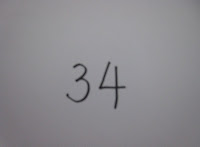It has been an enjoyable 2 weeks with Dr Yeah. Not because the workload is any easier but because of the real learning that have taken place and the confident in Mathematics that I am able to build up again after so many years...
In every lesson , I felt that I was taking on the identity of both a student and a teacher. As a student, I followed closely the instructions given and allowed myself to explore and experience mathematics in a fun and brand new way. As a teacher, I am aware of the numerous modelling effort by Dr Yeah on how to conduct Math lessons to young children , the variety of the teaching materials available, the proper math language to use, the do and don't , the scaffolding technique to get the children construct their own knowledge, the various friends that I get to know - Bruner, Diene, Van Hiele, Pick, etc. Yes, I got it.
But one very important thing that I learned from this course is that
the reason for teaching Math is not teaching Math itself.
And that Math is a tool for the
1. development of intellectual, logical reasoning, spatial visualization , analysis & abstract thought
2. development of numeracy, reasoning, thinking , and problem solving skills
3. opportunities of creative work and moment of enlightenment & joy.
This statement is profound! If I do not get the goal correct, the effort that I am putting in is futile. If it means that I have to rethink my teaching philosophy and unlearn everything about teaching pre-school math, i will. In this hi-tech world whereby mathematical problems and computational skill can be easily solved and accomplished by pressing a few buttons on the keyboard. What is there left for us to do?
Our belief will determine our actions. So
let's crack some heads,
let's kill some brain cells,
let's persevere,
let's out wit each other, and
let's have some fun!
Cheers!
From Tr Anita













